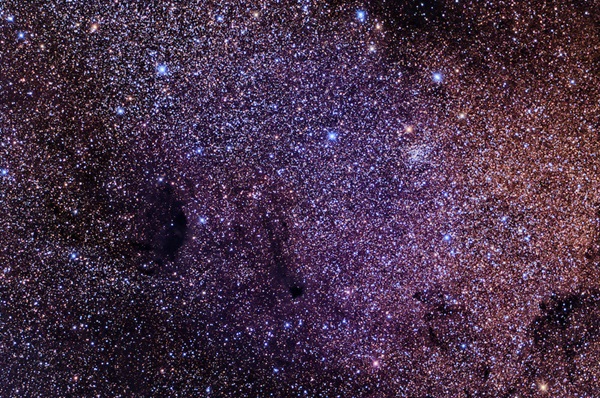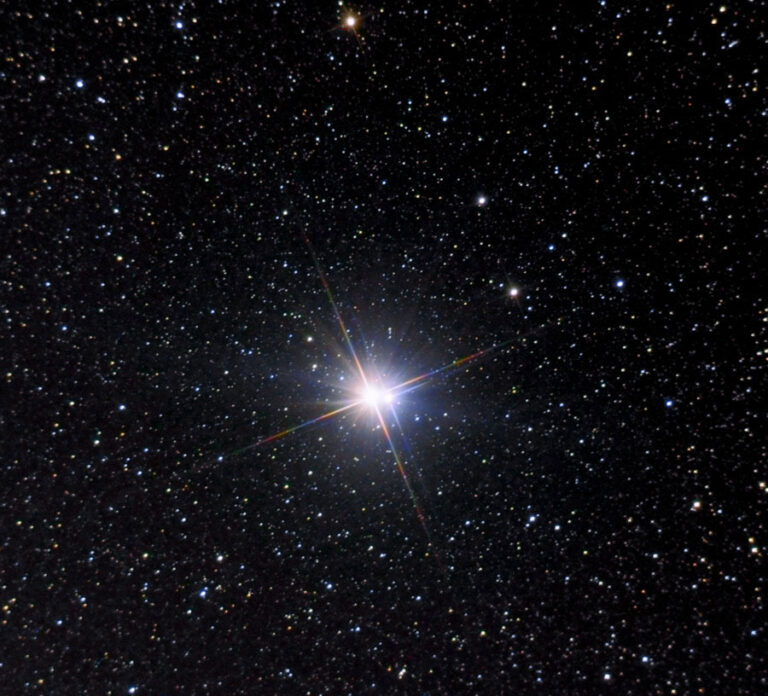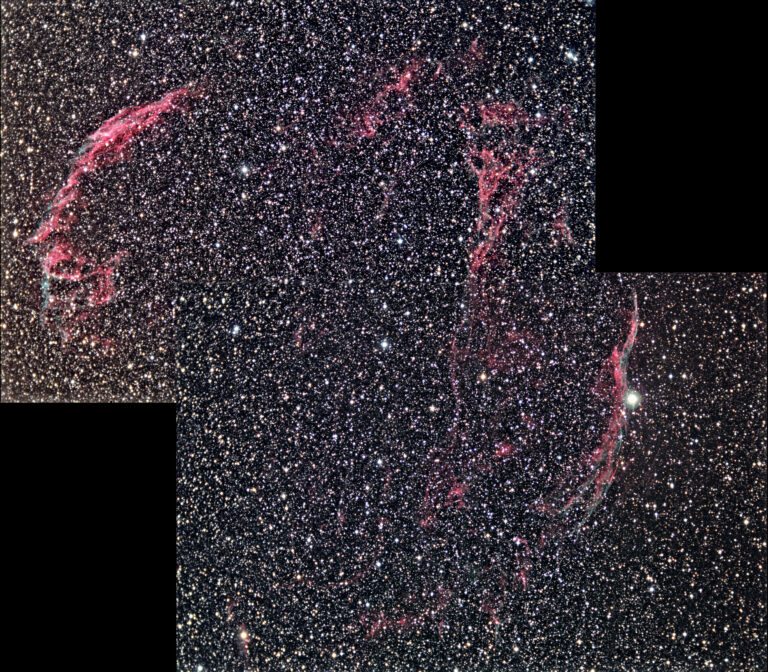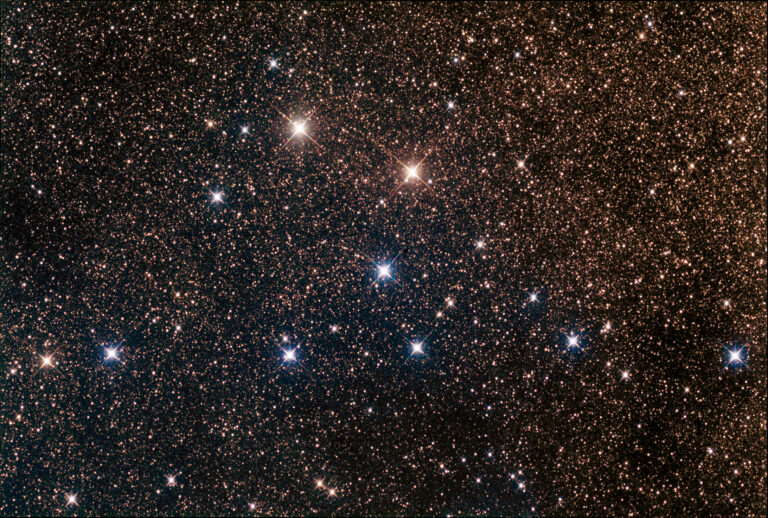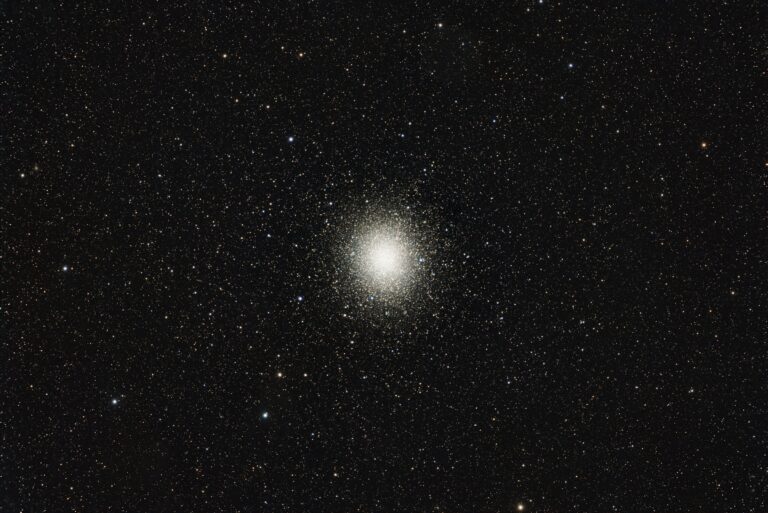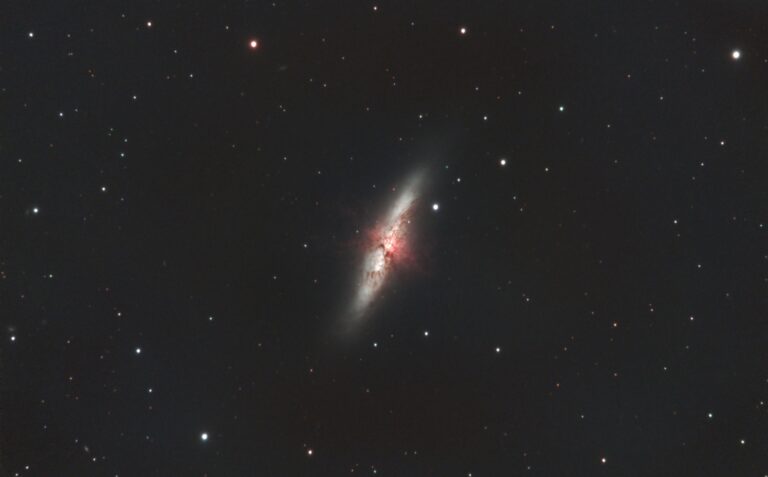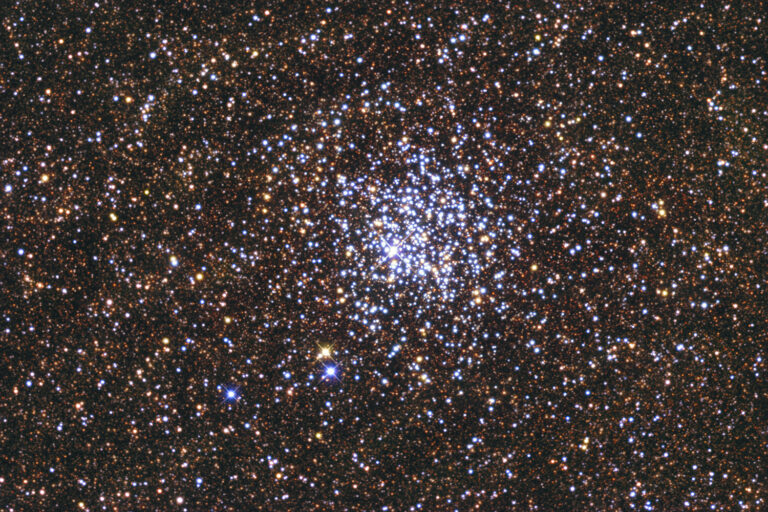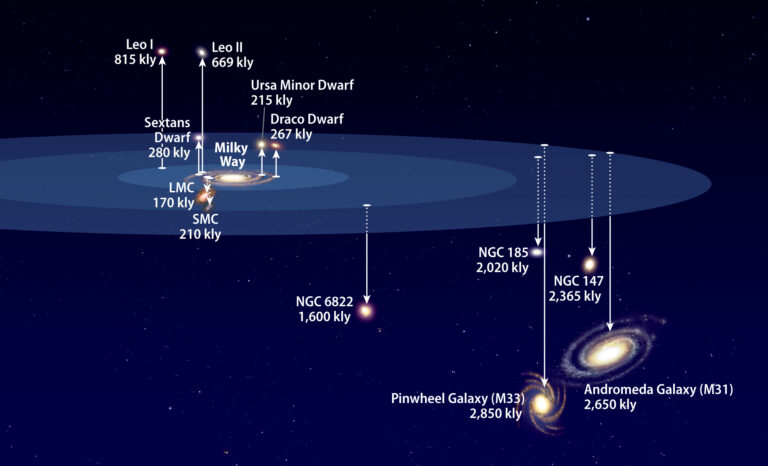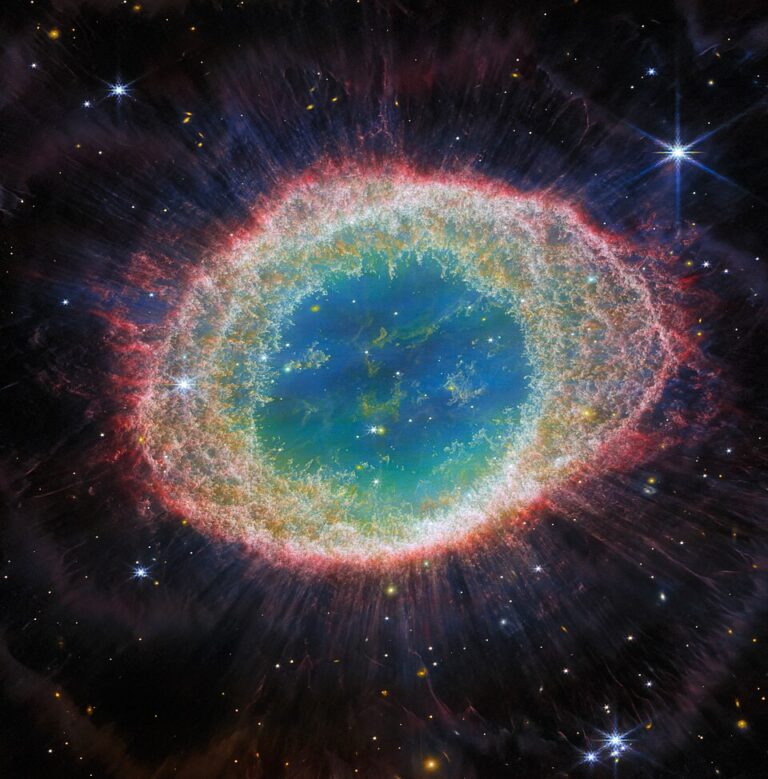Key Takeaways:
- Messier 24, initially cataloged by Charles Messier in 1764, was incorrectly identified for over two centuries as NGC 6603.
- M24 is not a distinct object like a nebula or cluster, but rather a region in the Milky Way where less interstellar dust obscures the view toward the galactic center.
- The Small Sagittarius Star Cloud (M24) appears as a rich starfield, encompassing the smaller, denser open cluster NGC 6603.
- The M24 region includes the dark nebulae Barnard 92 and Barnard 93, visible as silhouetted regions against the brighter stellar background.
Later observers went on to misidentify M24 as NGC 6603, which is a separate, small, tightly packed open cluster. The confusion wasn’t laid to rest until the 1960s, when British astronomer Kenneth Glyn Jones suggested that M24 was actually the larger region known as the Small Sagittarius Star Cloud, which encompassed NGC 6603.
The name “star cloud” is misleading, though. We are not looking at a distinct deep-sky object, such as a star cluster or a nebula. Instead, we are peering through an open window into the inner depths of the Milky Way. The plane of our galaxy is littered with cosmic dust, which is so opaque in some spots that we have no idea what’s going on behind it. But in this 1.5° by 0.5° rectangular frame, the dust curtains have been pulled aside, revealing stars more than halfway to the galactic core.
Only appearing as a bright patch of the Milky Way to the naked eye, the Small Sagittarius Star Cloud blossoms through binoculars into countless stars. But what about NGC 6603? This packed but faint open cluster resides in the richest part of the cloud, northeast of its center. Don’t expect to see many of this cluster’s individual stars, though, unless you observe it through at least a 10-inch scope.
A view of the star cloud does not come without a few intervening dust clouds, either. A pair of dark nebulae, Barnard 92 and Barnard 93, create a silhouette along its northern edge. Barnard 92 is a rectangular ink blot oriented north-south and measuring about 14′ by 8′. To its east, Barnard 93 is a smaller 8′ by 3′, as well as less defined.
Make sure to explore Astronomy’s full list of 101 cosmic objects you must see. New entries will be added each week throughout 2022.
To get the latest astronomical news and observing content delivered directly to your door, subscribe to Astronomy magazine today!

